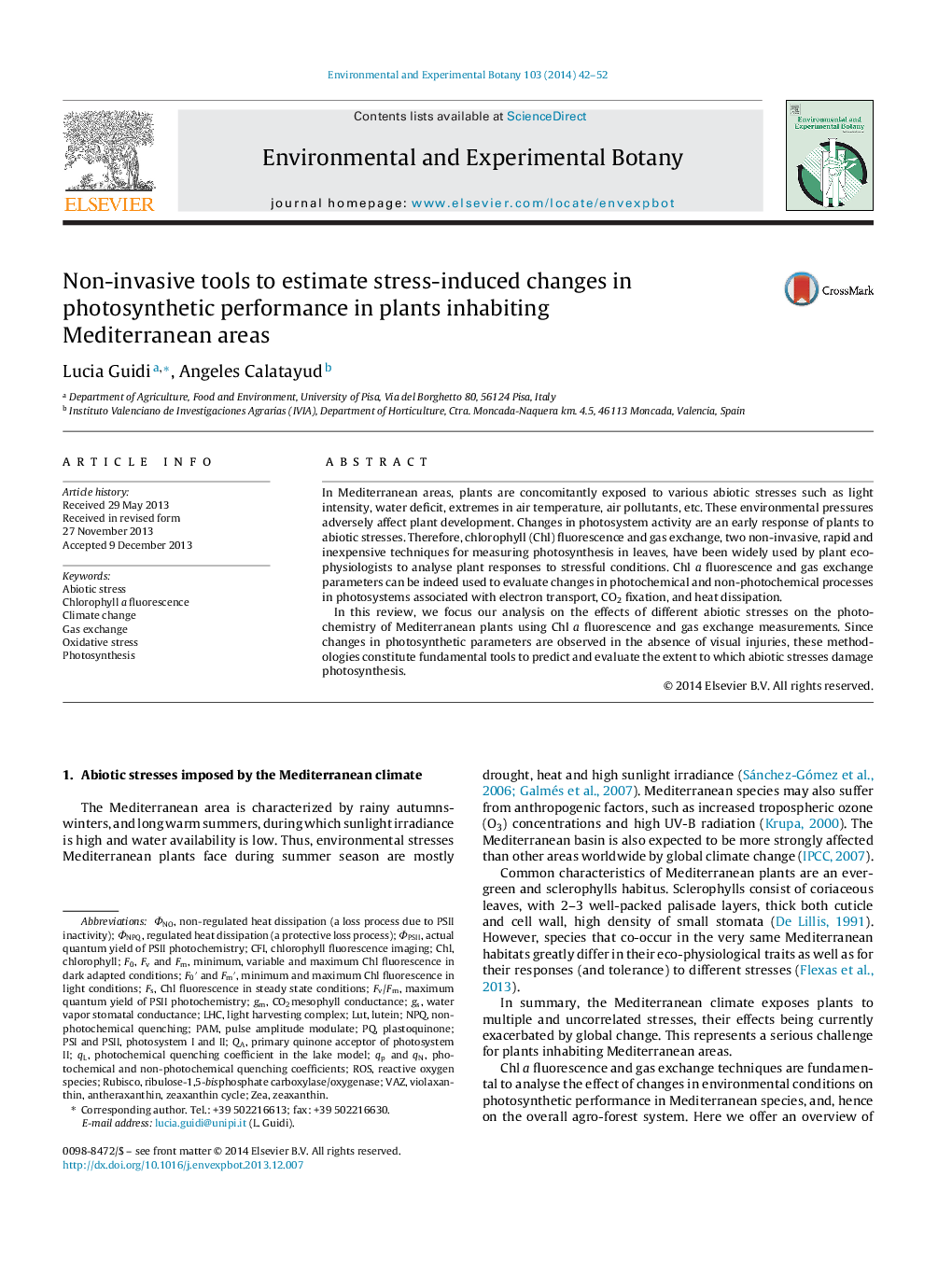| Article ID | Journal | Published Year | Pages | File Type |
|---|---|---|---|---|
| 4554434 | Environmental and Experimental Botany | 2014 | 11 Pages |
•Mediterranean area is characterized by rainy winters and long hot summers.•Chlorophyll fluorescence and gas exchange are non-invasive and rapid techniques.•In the Mediterranean area, plant species are continuously subjected to abiotic stresses.•These environmental factors adversely affect photosynthetic process.•Differential mechanisms are involved in the response of Mediterranean species.
In Mediterranean areas, plants are concomitantly exposed to various abiotic stresses such as light intensity, water deficit, extremes in air temperature, air pollutants, etc. These environmental pressures adversely affect plant development. Changes in photosystem activity are an early response of plants to abiotic stresses. Therefore, chlorophyll (Chl) fluorescence and gas exchange, two non-invasive, rapid and inexpensive techniques for measuring photosynthesis in leaves, have been widely used by plant ecophysiologists to analyse plant responses to stressful conditions. Chl a fluorescence and gas exchange parameters can be indeed used to evaluate changes in photochemical and non-photochemical processes in photosystems associated with electron transport, CO2 fixation, and heat dissipation.In this review, we focus our analysis on the effects of different abiotic stresses on the photochemistry of Mediterranean plants using Chl a fluorescence and gas exchange measurements. Since changes in photosynthetic parameters are observed in the absence of visual injuries, these methodologies constitute fundamental tools to predict and evaluate the extent to which abiotic stresses damage photosynthesis.
Graphical abstractFigure optionsDownload full-size imageDownload as PowerPoint slide
